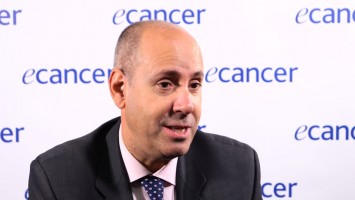The SOFT study was designed to evaluate the escalation of endocrine therapy, specifically the addition of ovarian suppression, to standard endocrine therapy in premenopausal patients with early stage oestrogen receptor positive breast cancer. Patients were eligible if they had received chemotherapy and remained premenopausal following chemotherapy or if they had not received chemotherapy and were premenopausal. They were randomised to receive tamoxifen for five years, which was standard of care, or to ovarian suppression either with tamoxifen or the aromatase inhibitor exemestane for five years.
Results were reported at 12 years follow-up at San Antonio in 2021 and showed a significant benefit for exemestane plus ovarian suppression versus tamoxifen in terms of recurrence and also a benefit for tamoxifen plus ovarian suppression compared to tamoxifen, although this wasn’t as significant.
The issue here is that we know that some premenopausal patients need ovarian suppression but we don’t really know which ones do. This is important because ovarian suppression is associated with both short-term and potentially long-term toxicities and also can impact their compliance with endocrine therapy. What we have known before is that younger women who get chemotherapy appear to benefit from ovarian suppression but we don’t have a genomic biomarker as yet, which is unlike other situations with ER positive breast cancer where we have the 21-gene recurrence score which tells us which patients need chemotherapy.
To that end, the Breast Cancer Index is a molecular assay that incorporates what’s referred to as the molecular grade index and then the H/I ratio, which is the ratio of two genes that are involved with oestrogen receptor signalling. The Breast Cancer Index, or BCI, has been shown to be prognostic for determining which patients are at risk of late recurrence. Also, the H/I ratio has been shown to be predictive for extended adjuvant endocrine therapy beyond five years. So it made sense, based on this data, to evaluate BCI in patients involved in the SOFT trial as a means of trying to determine which patients actually need ovarian suppression.
What were the key findings?
The hypothesis that we had was twofold. The first was that BCI, which incorporates the molecular grade index and the H/I ratio would be prognostic in premenopausal patients with ER positive breast cancer. The second hypothesis we had was based on what we’d seen before, that a high H/I ratio would be predictive for which patients needed ovarian suppression versus a low H/I which would not be.
So we had samples from just over half the patients enrolled in the SOFT study, so about 1,600 patients. RNA was extracted and the BCI assay was done on these specimens. The specimens that we had were from patients that really mirrored the overall SOFT population, so whether you looked at age, nodal status, receipt of chemotherapy, was very similar to the intent to treat population in SOFT. Just as a reminder, 12% of patients on the SOFT study had HER2 positive cancers which, again, was what we saw in the group that we had.
What we found first of all was that BCI was prognostic in these premenopausal patients. So as the BCI score went up their distant recurrence went up. This was true whether they had node negative disease or N1 disease.
The second thing we found was that, indeed, the H/I ratio was predictive for benefit of ovarian suppression. So overall what we found was that about 60% of patients had low H/I cancers and about 40% had high H/I cancers. But what we found, contrary to our hypothesis, was that in patients with cancers that had a low H/I ratio that was where there was prediction for ovarian suppression. So in that group patients who received exemestane plus ovarian suppression had a significantly lower recurrence rate compared to patients who got tamoxifen. Likewise, though not quite as significant, patients who got tamoxifen plus ovarian suppression also did better than patients who got tamoxifen. In contrast, in patients whose tumours had high H/I this was not predictive for ovarian suppression. So the assay was predictive, but not in the manner that we thought it was going to be.
We also looked at the H/I ratio based on patient age, using a cut-off of 40, whether the patients received chemotherapy or not or whether they had positive lymph nodes or not. Across all of the groups the patients who had low H/I were able to show that ovarian suppression with exemestane they did better than if they just got tamoxifen. Likewise, with high H/I this was not predictive for the benefit of ovarian suppression.
What do you think could be the clinical impact of these findings?
First, although 1,600 patients seems like a large number of patients, our findings do need to be validated, especially because they were contrary to what we initially hypothesised, and we are planning on doing that. However, if this is validated this will be a genomic test that can be used to basically tell a premenopausal patient whether she needs ovarian suppression or not. So, as I mentioned, it’s a very important question because we really don’t want to give ovarian suppression to patients who aren’t going to benefit. So what we would do if it’s validated is we would send the BCI H/I ratio really at the time of diagnosis; if it comes back low then we know they need ovarian suppression but they are probably done with their endocrine therapy in five years. If it comes back high then we know they don’t need ovarian suppression but we’re probably going to recommend to those patients ten years of endocrine therapy.








